
Girona (Gerona) is a city in the North - East of Spain, capital of the homonymous province part of the Autonomous community of Catalonia.
Girona is a major Catalan town located at a distance of 100 kilometers North-East from Barcelona.
Girona - the city is small and compact, it's easy to explore for a couple of days.
First Girona attracts the fact that it has more than 2000 years of history, originating from the Roman era with a strong medieval following, reflected in Girona's old town.
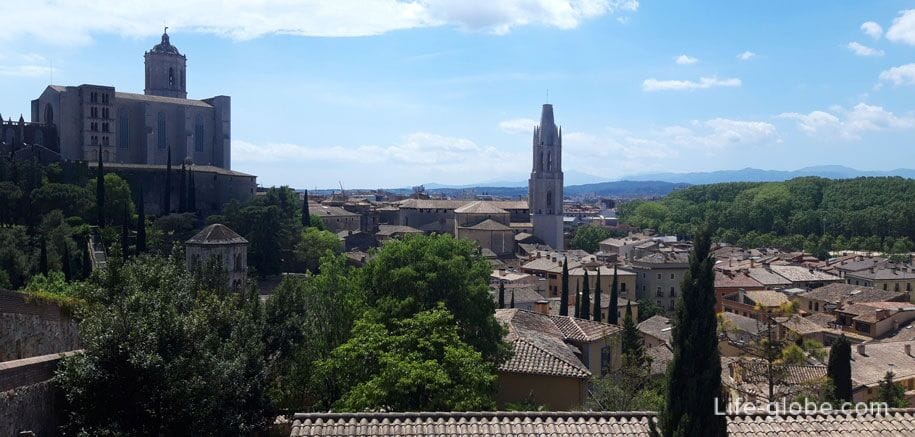

Girona has an excellent location, giving the opportunity to combine the visit to Girona with the nearby seaside resorts and famous cities of the Costa Brava and Costa del Maresme, Barcelona, Figueres, Andorra, France.
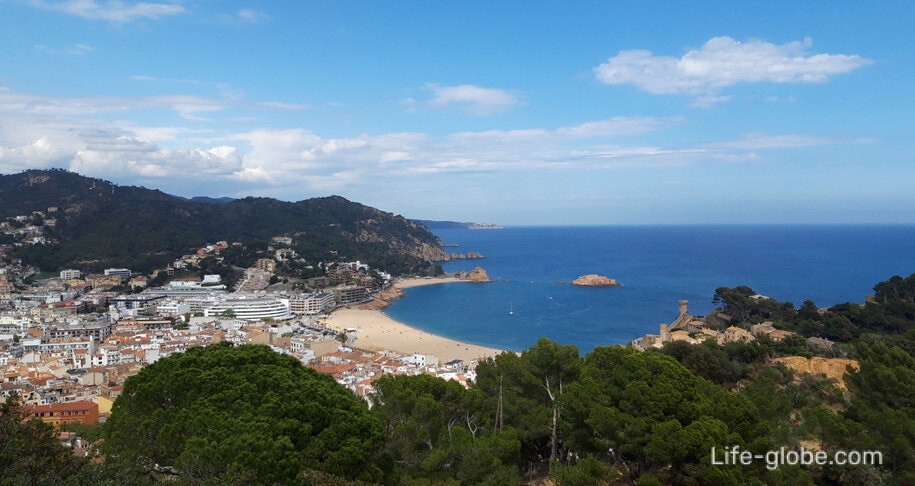
Girona has the Girona-Costa Brava International Airport, located just 12 kilometers from the center of Girona.
Girona Airport is attractive because it serves local and international flights, including low-cost airlines. As a result, you can get from many cities to Girona at very attractive prices. Cheap flights to Girona...
From the airport to Girona city centre can be reached:
- by taxi. Book a taxi/Shuttle service is possible in advance, even from home. At any time of the day, at the airport, you will meet your driver with a sign, which will be written your name and surname. For taxi is enough to tell us your flight details!
- car. The most convenient way to self-move to Spain is a car. You can rent a car in advance, even from home, the car will be waiting for you upon arrival. Cars for rent, you can look and book here...
- public bus lines 607 or passing No. 601, 602, 605. Read more about how to get from Girona airport to the center...
Alternatively, you can fly to Barcelona and after to go to Girona. Barcelona - Girona how to get (airports, city centers)...
From Barcelona and Girona to France, Italy, Switzerland, Hungary, Portugal and some other European countries can be reached by bus FlixBus. View all destinations of the buses and buy your ticket here...
Where to stay in Barcelona! All accommodation facilities in Barcelona (hotels, apartments, hostels, etc.) can view and book here
The centre of Girona, where flows the main tourist life can be divided into two parts: the modern city - district El Mercadel (El Mercadal), located on the West Bank of the Onyar river and the historic centre with medieval buildings - the old town "Barry vel", on the Eastern Bank of the river.
The most interesting and beautiful part of the river Onyar, which is a symbol of the city, running from Plaza Catalunya to the bridge of Sant Feliu.
Along this part of the river Onyar dense, located near the colorful houses overlooking the river, has long become a hallmark of Girona.
Onisr the river crosses several famous bridges connecting the old quarter with modern city: Pedra bridge, Eiffel bridge, the bridge of Gomez and the bridge of Sant Feliu. Read more about houses and bridges on the river Onyar in Girona...
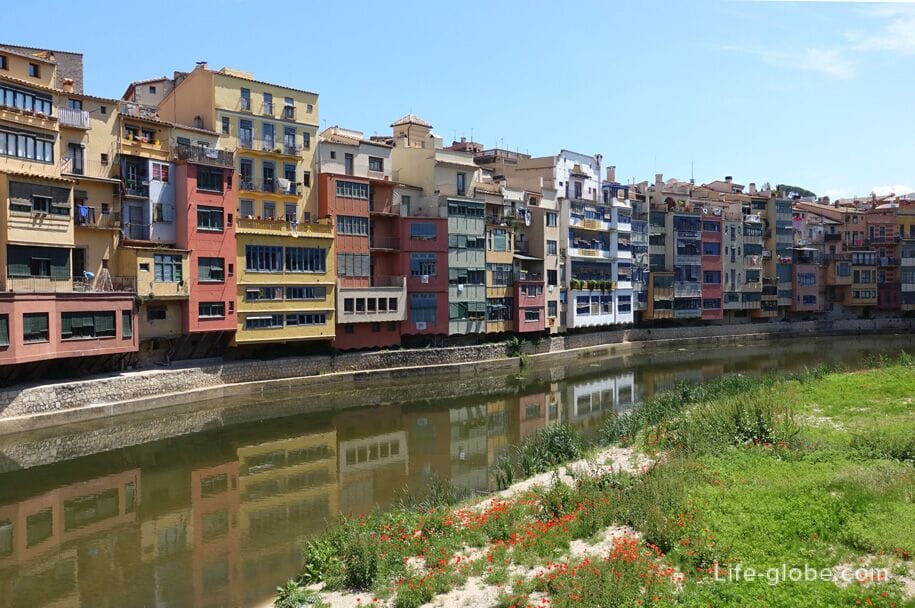
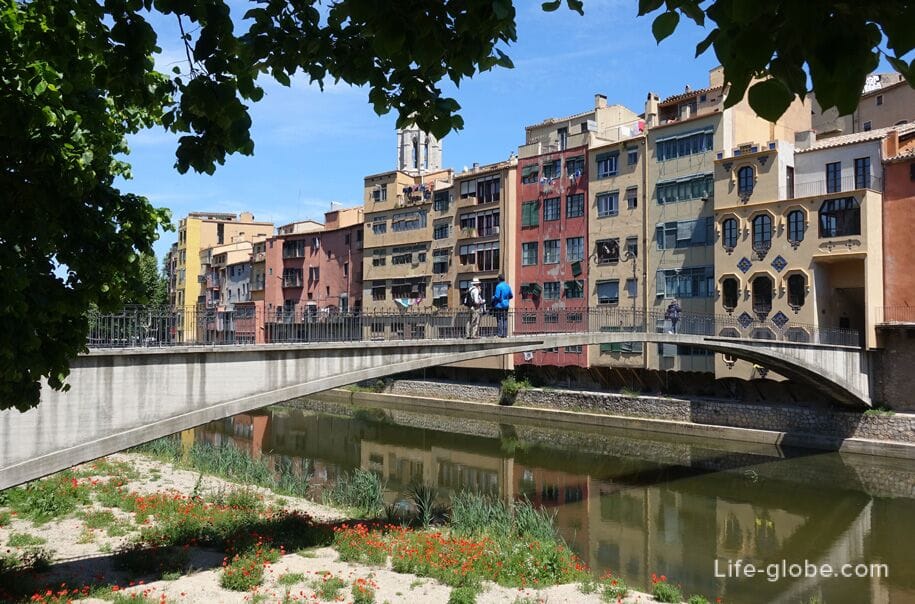
Old town Girona is a real treasure of history and architecture, called Barry vel (Barri Vell), which translated from Catalan means "the old quarter".
With the Northern, Eastern and partially southern sides, the old quarter of Girona is surrounded by former fortress walls with watchtowers.
Currently, the wall of Girona is one of the main attractions of the city and is a separate tourist route and the best viewpoint of the city. On the wall you can walk. Read more about the wall of Girona...
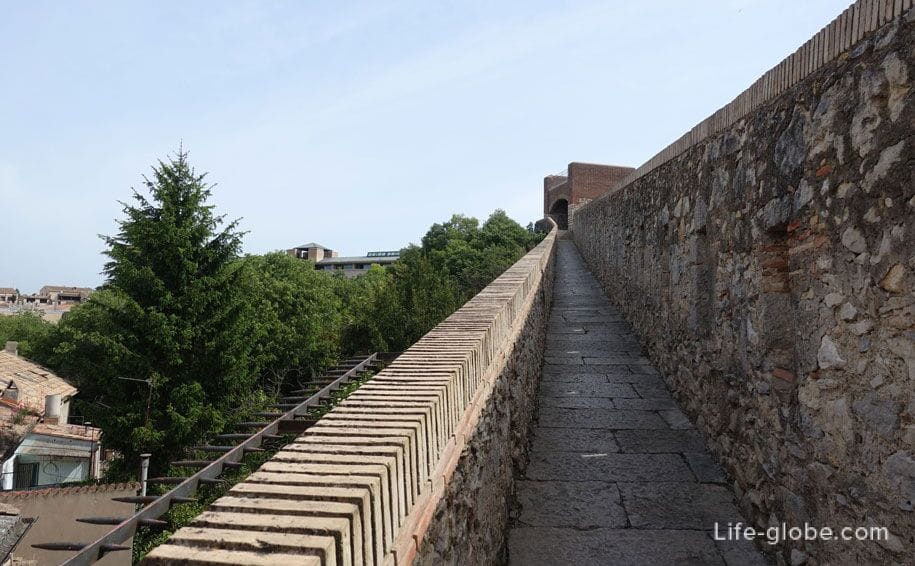
The main street of the old quarter of Girona is the Rambla same La Llibertat (Rambla de la Llibertat), notable 19th century buildings, which appeared on the ruins of the city wall and the old market square. Read more about the Rambla in Girona...
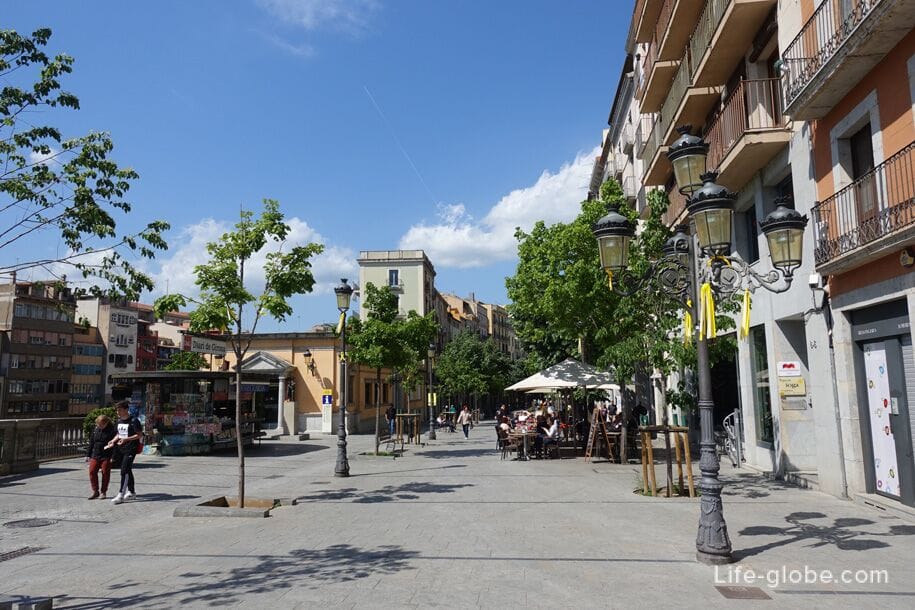
The main attractions of Girona's old town are:
- Girona Cathedral (Catedral de Girona) or the Cathedral of Saint virgin Mary (Santa Maria / Catedral de Santa Maria), built between the 11th and 18th centuries.
The Cathedral includes a number of walls and spaces in different styles, mainly Gothic and Romanesque (the cloister and tower of Charlemagne) and Baroque, embodied in the facade and the wide steps leading to the main entrance to the Cathedral.
In the walls of the Cathedral treasure Museum of the Cathedral, which houses important works of religious art, a collection of Gothic sculptures, paintings and silverware;
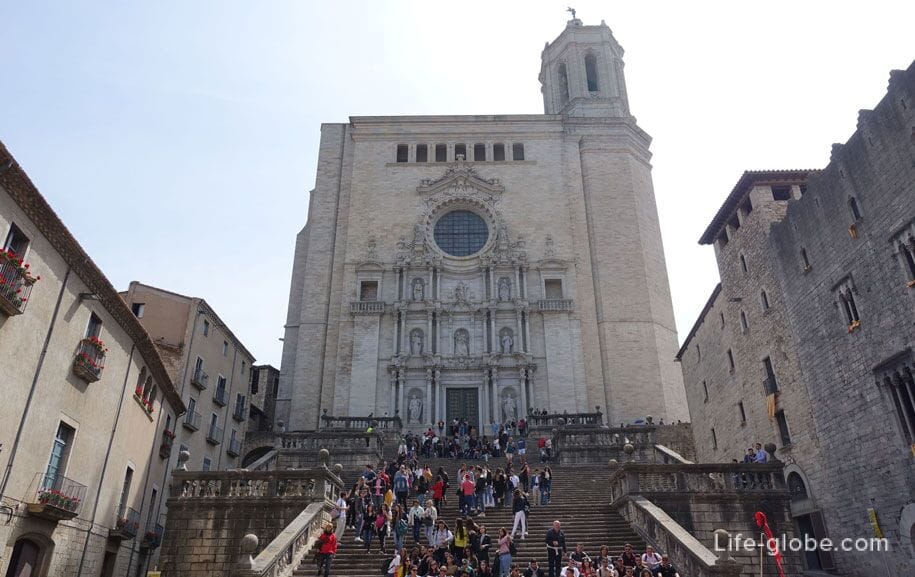
- collegiate Church of St. Felix (Basilica de Sant Feliu).
The first Church in this place was built in early Christian times. In the present building has elements of Romanesque, Gothic and Baroque styles.
Before the construction of the Cathedral it was the Church of Girona.
The architecture of the Church is notable for the high austere bell tower of the 14th to 16th centuries;
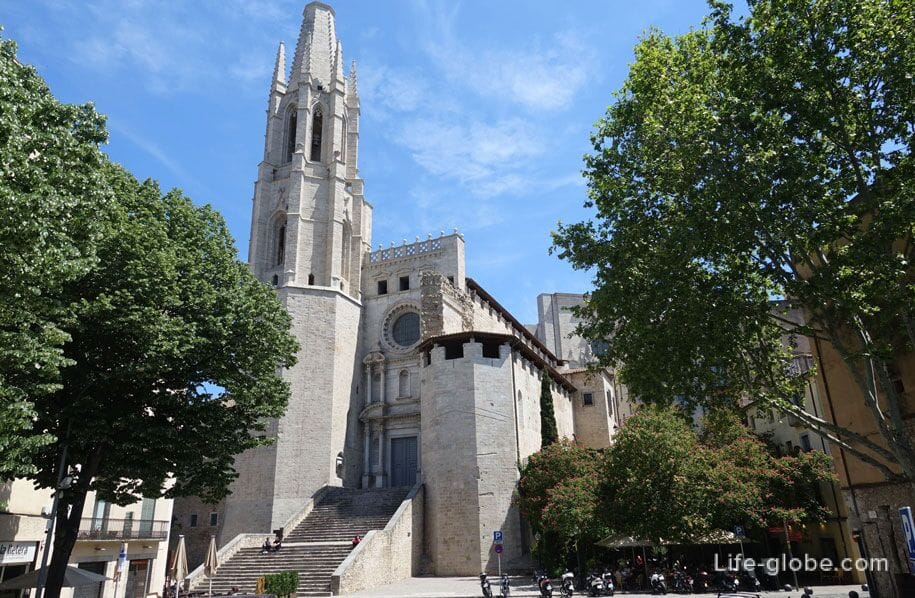
- the sculpture "Girona Lioness" (La Lleona), which are so fond of kissing ass.
Originally a Romanesque stone sculpture was found in Girona and dated to the 11th century. In the next sculpture is called "the Lioness". Currently, the original lioness is in the art Museum of Girona, whereas under the open sky for all to see the copy. Read more about Girona lioness...

- the Arab baths (Banos arabes), a unique building of the 12th century, built by the example of Roman baths and mimicking the structure of the Muslim baths.
The building functioned as bathrooms (baths, baths, baths) until it was closed in the 15th century. In 1618, the baths were purchased for the community of the Capuchin friars who used the space as a pantry, kitchen and Laundry. In 1929, the baths became public domain and were restored, now a Museum;
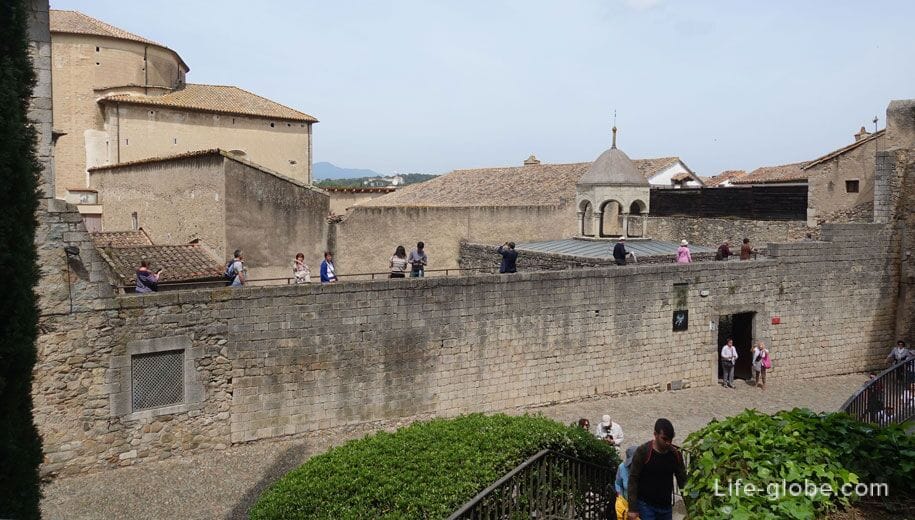
- the monastery of Sant Pere de Galligans (Monestir de Sant Pere de Galligants) and St. Nicholas ' chapel (Capella de Sant Nicolau), located in close proximity to each other, together represent a single complex and one of the most striking examples of Catalan Romanesque art.
Since 1857 the buildings houses the Archaeological Museum of Catalonia, with both permanent and temporary (changing) exhibitions;
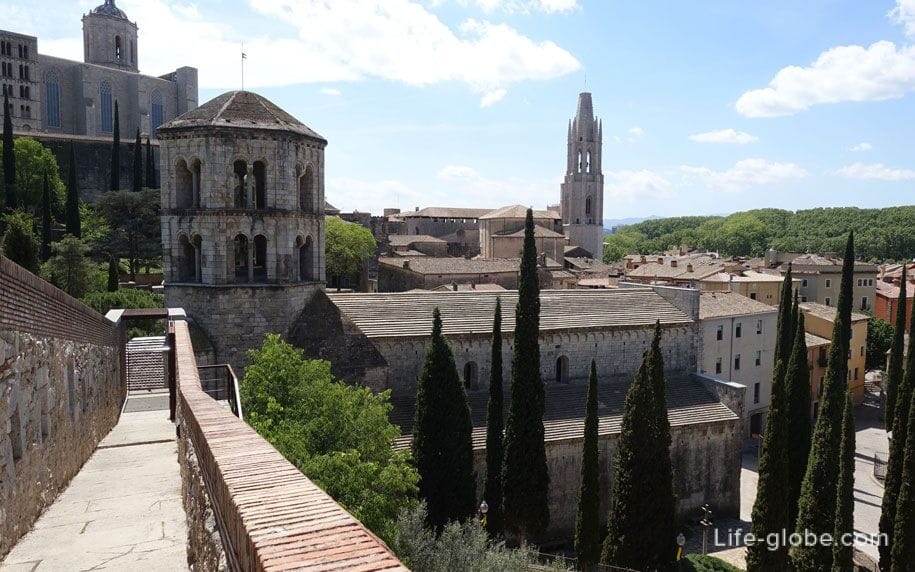
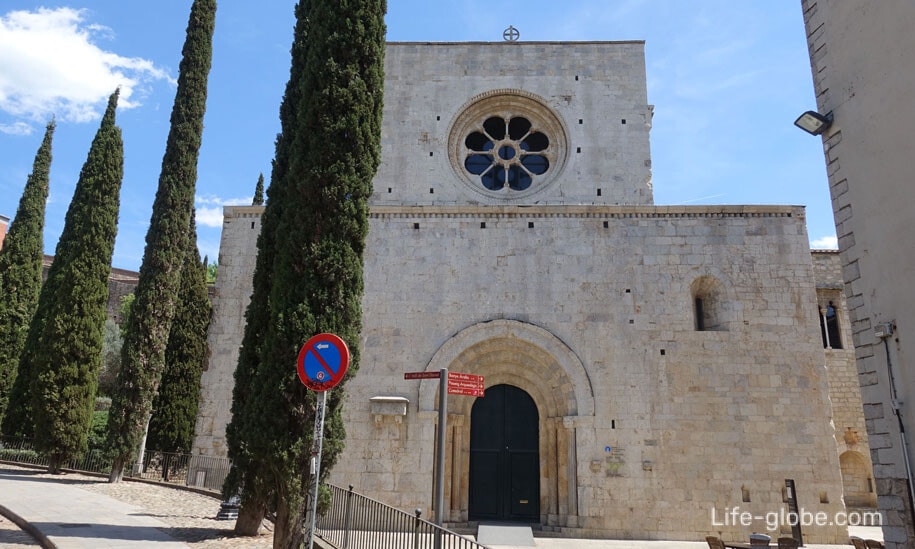
- Jewish quarter El Kal or Call (El Call jueu), some of which are remnants of the historic Jewish community of Girona.
The quarter consists of a few narrow streets and patios that have maintained their medieval atmosphere.
In the quarter, is a Museum of Jewish history in Girona (Museu d ' Historia dels Jueus), which was previously a Synagogue. Read more about old town of Girona...
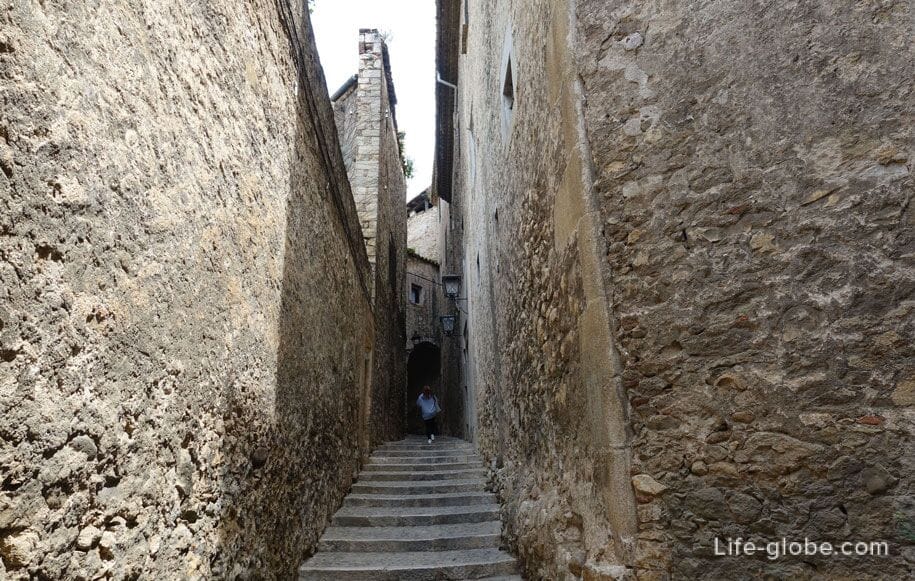
Outside the city walls of Girona remarkable monastery of St. Daniel (Monestir de Sant Daniel) is a religious complex located at Carrer de les Monges, 2.
The monastery was founded in the early 11th century, has two floors: the lower of the 13th century with a Romanesque ornaments and the upper, in Gothic style, 15th century.
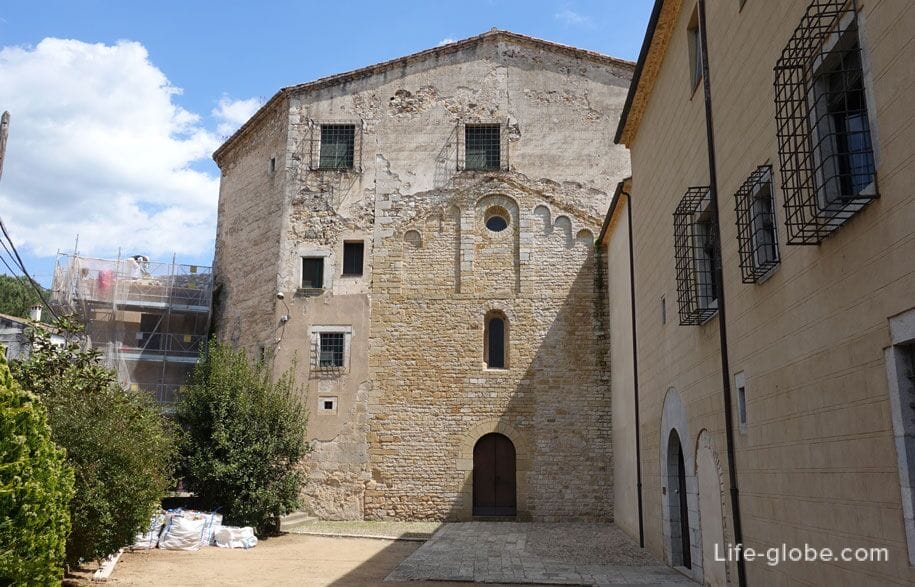
The main street of the modern part of Girona lies along the West Bank of the Onyar river, from Plaza Catalunya and to the Devesa Park.
It consists of several streets and squares:
- street of Santa Clara (Carrer de Santa Clara).
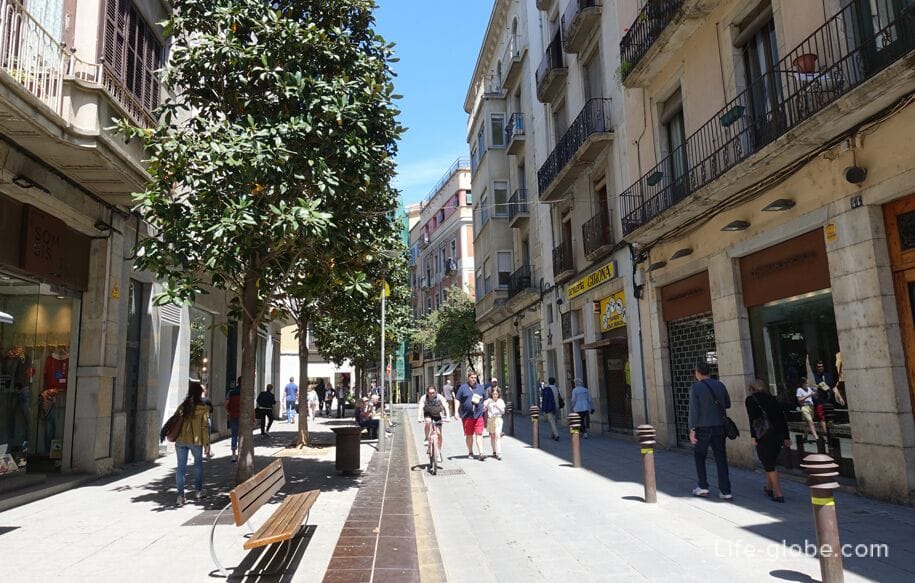
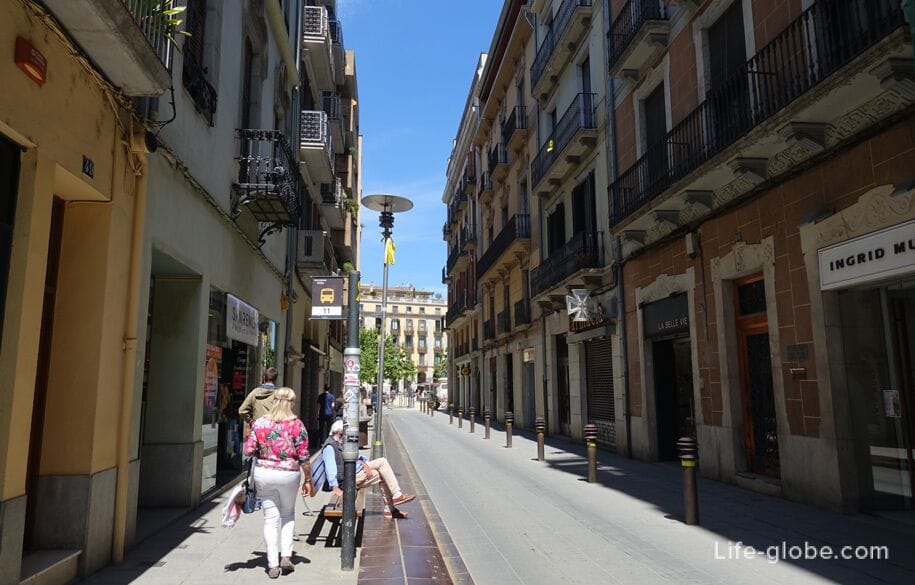
Near this street is notable for the area of Santa Susanna (Santa Susanna Placa) on which there are: the parish of Santa Susanna del Mercadel (Parroquia de Santa Susanna del Mercadal), the 14th and 15th centuries, with the reconstruction of the 20th century; and the Museum of cinema in Girona (Museu del Cinema), located in the building Agues (Casa de les Aigües), representing the collection to cinematic works - from the first moving images from shadow theatres to modern cinemas;

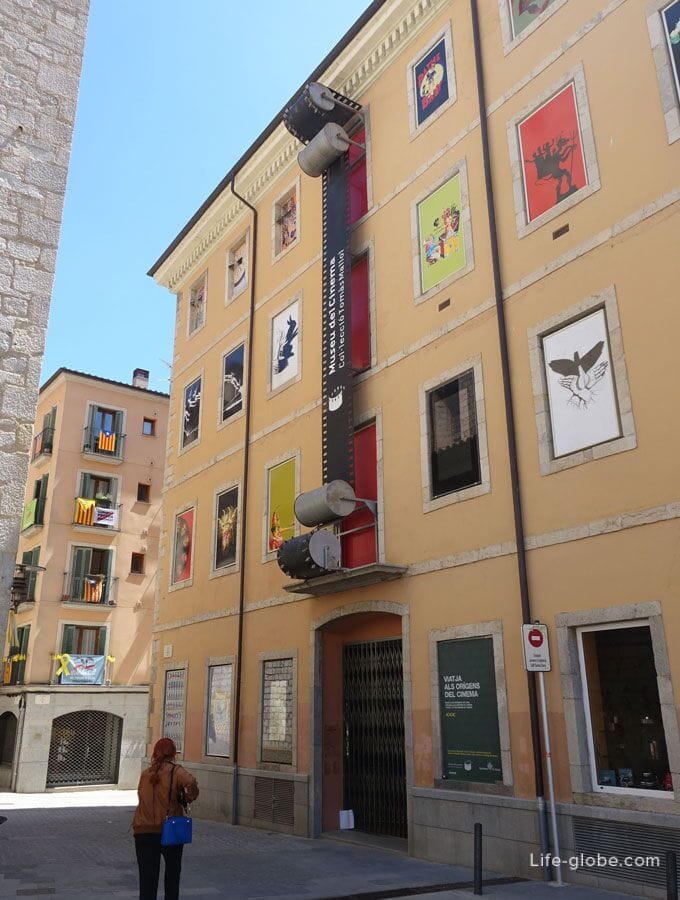
- Independence square (Plaça de la Independència), having a rectangular shape. The perimeter of the square is decorated with a simple neoclassical buildings-twins of the 19th century, with semicircular arches on the first floor.
In the center of the square there is a sculptural composition dedicated to the defenders of Girona 1808-1809. Read more about Independence square in Girona...
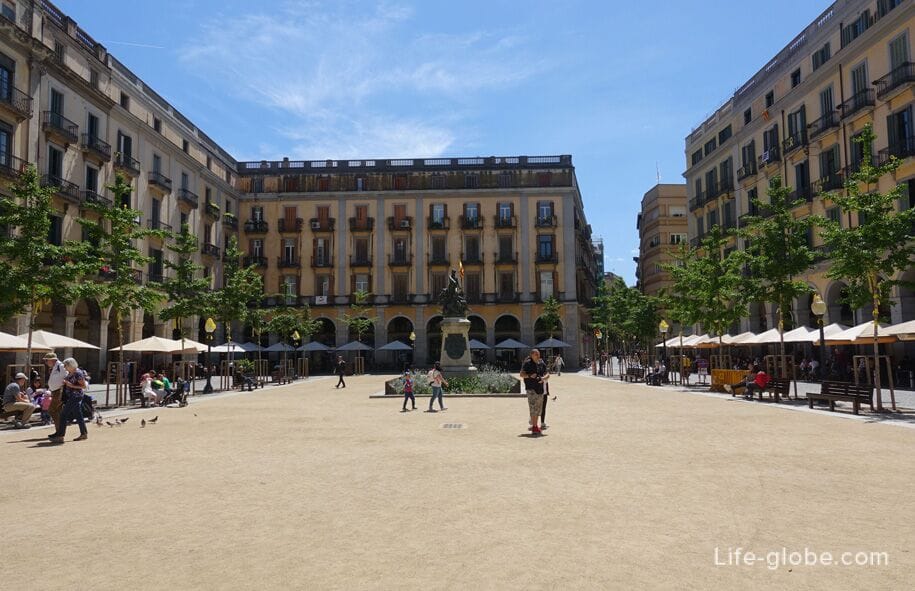
- street josé Canalejas (Passeig José Canalejas), which runs along the river, from Independence square to the Devesa Park.
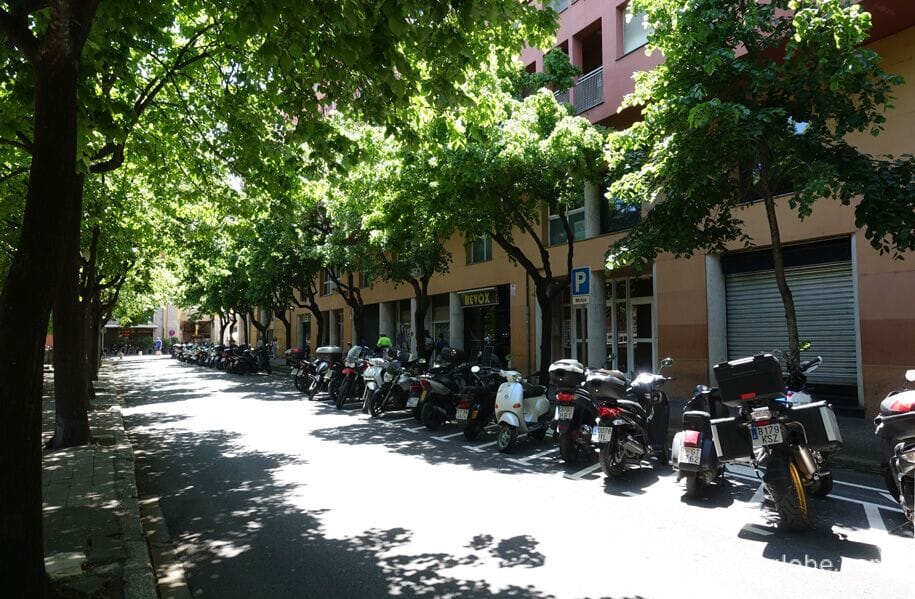
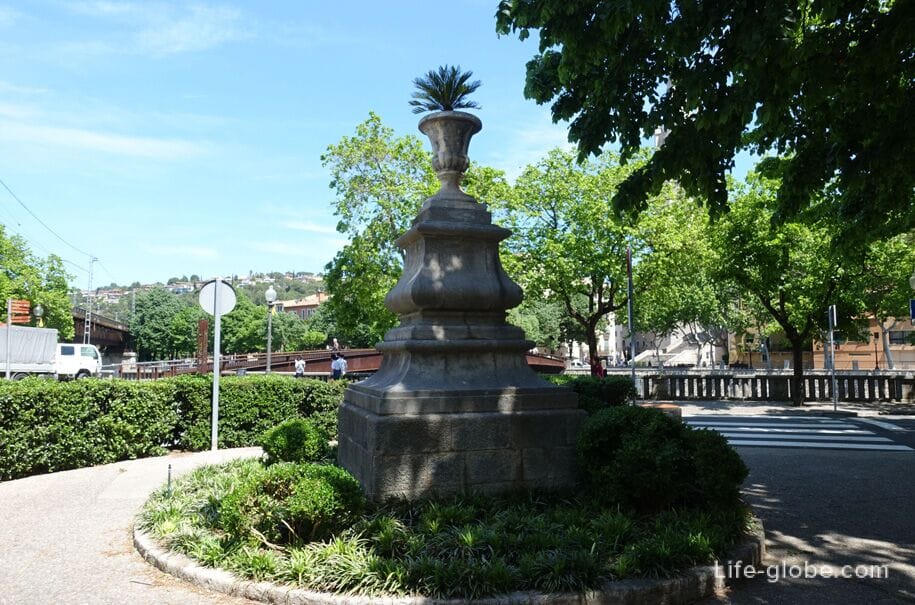
In this part of the street is notable for the theatre Sala La Planeta (Sala La Planeta), established in 1987 in the building that for many years was station and garage bus company Sarfa;
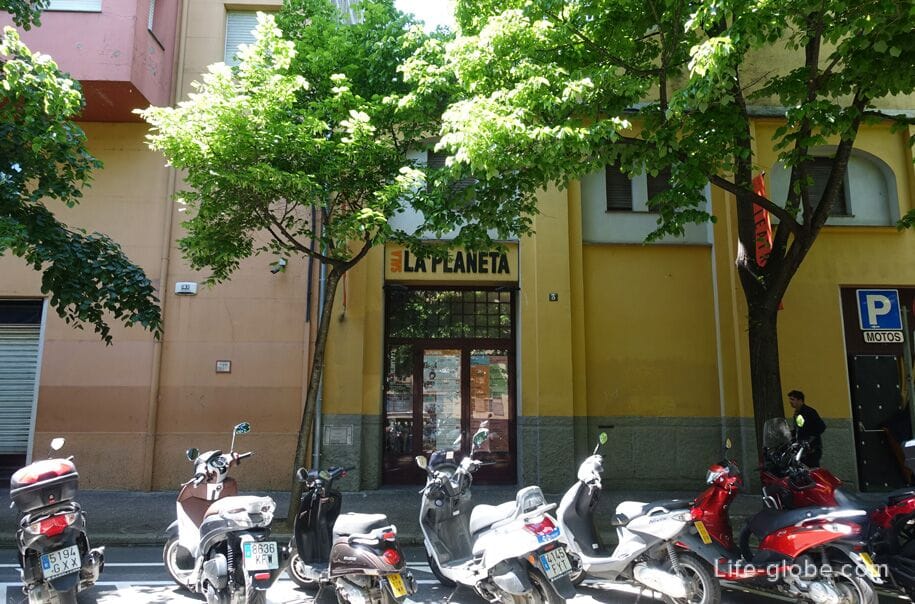
- Park de La Devesa (Jardins de la Devesa), which is a great place for walking and recreation in Spain and the largest Park in Catalonia, with an area up to 40 hectares.
In the Park: platanovaya alley, places for rest and walks, children's playgrounds, picnic area, sculptures and monuments, fountains, flower beds, space for dog run, French garden and city cultural facilities. Read more about the Devesa Park in Girona...
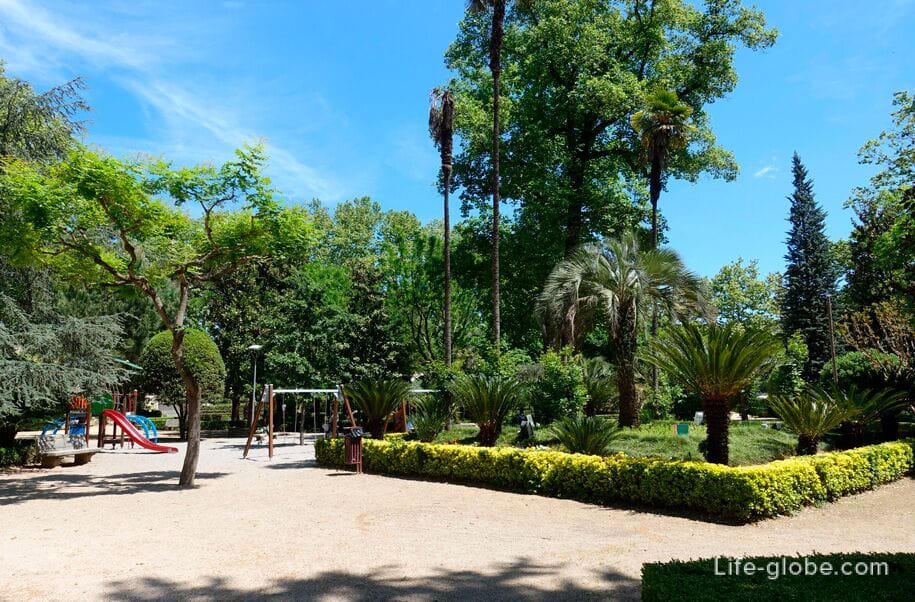
On the West Bank of the river Onyar, among others, notably the building of the old hospital of Santa Caterina (Antic Hospital de Santa Caterina), built in the second half of the 17th century.
The hospital functioned until 2004. Since 2010 the building is the headquarters of the government of Catalonia.
In the building of the old hospital open to the public lobby, the chapel and the pharmacy of Santa Caterina, which is a rectangular room covered with a decorative arch, adorned with allegorical paintings of the 19th century, which in turn cover other previous frescoes, starting with the Baroque period. Read more about all of the attractions in Girona...
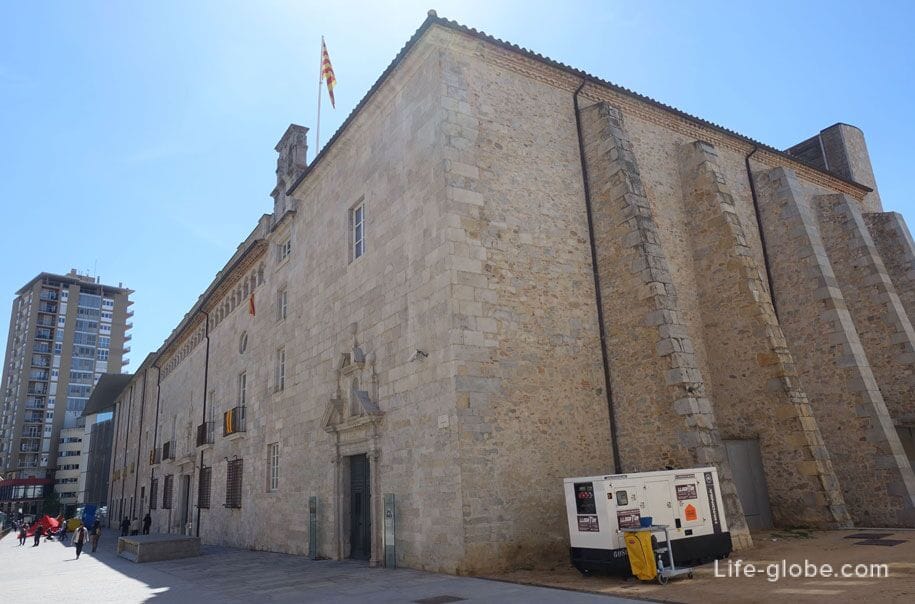
In the city center's shops, salons, souvenir shops, supermarkets and market Lion (Mercat del Lleó), which is a traditional Spanish municipal market, which is about 60 outlets, where you can buy fresh food. Read more about the Lion market in Girona...
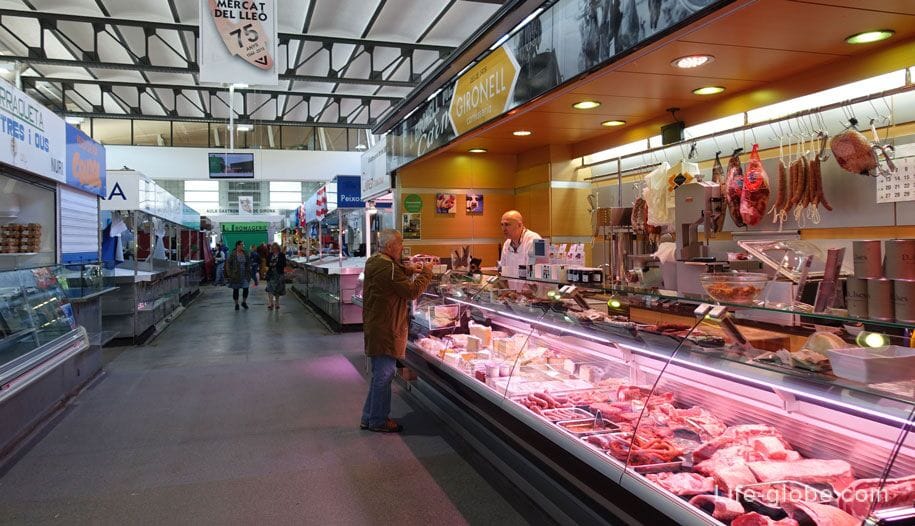
Within the city there are shopping centres: El Corte Ingles (address: Carrer Barcelona 106-110) and Espai Girones (address: Camí dels Carlins, 10).
The choice of accommodation in Girona are very diverse, ranging from budget guest houses and apartments, ending the 5 star hotel Palau de Bellavista is located in the historical centre of the city, or more distant from such.
All means of accommodation in Girona you can view and book here
Spain is part of the Schengen area. To visit the country, you may need travel insurance.
Spain is part of the euro area, so the country's currency is the Euro (€). Both cash and bank cards are accepted for payment in many shops, cafes and restaurants.